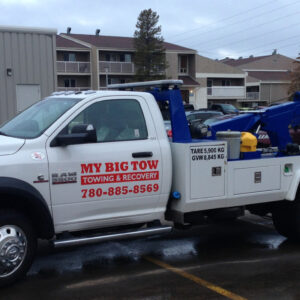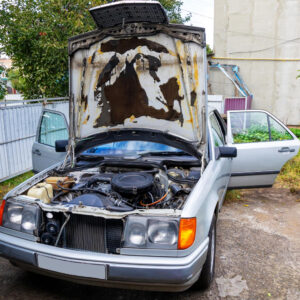In the bustling world of commercial kitchens, having the right equipment can make all the difference. High-performance cooking equipment is built to handle the demanding environment of professional kitchens, providing both reliability and speed. This advanced equipment not only improves food quality but also enhances the efficiency of kitchen operations. By upgrading to high-performance commercial cooking equipment, kitchens can operate more smoothly, ultimately delivering better customer service. Whether you’re managing a bustling restaurant or a cozy café, equipping your kitchen with high-quality tools is a smart move that can boost overall performance and customer satisfaction.
Energy Efficiency Benefits
Energy-efficient cooking equipment offers substantial benefits to modern kitchens. By consuming less energy, these appliances can significantly reduce operating costs, resulting in considerable savings on utility bills. Additionally, energy-efficient equipment helps lower your kitchen’s overall carbon footprint, supporting environmentally friendly practices. This is crucial as many businesses aim to meet sustainability goals and adhere to stricter environmental regulations.
Utilizing appliances designed for energy efficiency can also enhance the performance of your kitchen by maintaining consistent temperatures and cooking times, ensuring better quality control. High-performance, energy-efficient models often incorporate advanced technologies that optimize energy use without compromising output.
For example, induction cooktops use electromagnetic energy to heat pots and pans directly, making them more efficient than traditional gas or electric ranges. Moreover, energy-efficient refrigeration units maintain optimal temperatures more effectively, preserving food quality and preventing energy waste. Another advantage is that these appliances often have longer lifespans and require less maintenance, thanks to their advanced designs and durable components.
This contributes to fewer disruptions in the kitchen and lower repair costs over time. Implementing energy-efficient equipment is a smart strategy for any commercial kitchen to enhance operational efficiency while promoting sustainability.
Types of High-Performance Equipment
When exploring high-performance cooking equipment, the choices are extensive and tailored to meet various culinary needs. Modern ovens and ranges, for instance, provide precise temperature control and faster cooking times, which are essential for maintaining food quality and service efficiency.
Induction cooktops, which use electromagnetic energy to heat cookware directly, are gaining popularity for their speed and energy efficiency. Another vital category includes innovative refrigeration units designed to keep ingredients at ideal temperatures, thus ensuring freshness and safety. Blast chillers are also crucial in rapidly cooling food to safe storage temperatures, minimizing bacterial growth.
Additionally, combi ovens, which combine steam and convection cooking methods, offer versatility by allowing chefs to prepare various dishes with different cooking techniques. Advanced grills and griddles are designed for even heat distribution, ensuring consistent cooking results. Deep fryers with built-in filtration systems help maintain oil quality, critical for food taste and health standards.
Steamers are another excellent option for cooking vegetables and seafood, as they retain nutrients and flavor without added fats. High-performance mixers and food processors speed up prep time, enabling kitchens to handle large volumes efficiently. With all these options, it’s clear that investing in state-of-the-art cooking equipment can transform kitchen operations, enhance food quality, and improve overall productivity.
Chefs and restaurant owners alike find that these advancements streamline their workflows and open up new possibilities for menu innovation. By leveraging cutting-edge technology, culinary professionals can experiment with new flavors and textures, pushing the boundaries of traditional cooking methods.
Durability and Reliability
Commercial kitchen environments demand equipment that can withstand heavy usage. Durability is crucial, and this often means choosing appliances made from robust materials like stainless steel, which is resistant to corrosion and easy to clean. Reliable performance is equally important, as any breakdowns can disrupt service and lead to costly repairs. Ensuring that your equipment is designed for rigorous use can minimize these risks.
Many high-performance appliances feature advanced engineering that enhances their durability. For example, reinforced components and sturdy construction can prevent common issues such as overheating or mechanical failures. Investing in well-built equipment can save time and money in the long run by reducing the frequency of breakdowns and the need for replacements.
Regular maintenance practices are vital for sustaining both durability and reliability. Simple actions such as cleaning, inspecting, and lubricating moving parts can significantly extend the lifespan of your tools. Keeping an eye on wear and tear allows you to address minor issues before they become major problems. Some modern equipment even includes diagnostic systems that alert you to maintenance needs, helping you stay proactive.
Focusing on durability and reliability when selecting and maintaining your cooking equipment can ensure consistent performance, reduce operational disruptions, and maintain a high standard of service.
Choosing the Right Cooking Equipment for Your Business
Choosing the right cooking equipment involves carefully assessing your kitchen’s specific needs and the type of cuisine you offer. Start by evaluating the volume of food you need to produce daily. High-capacity equipment may be necessary for large-scale operations, while smaller establishments might benefit from compact, multifunctional appliances.
Consider the space in your kitchen to ensure the equipment will fit without hindering workflow. It’s also essential to match the equipment’s capabilities with your menu requirements. For example, a bakery may prioritize high-quality ovens and mixers, whereas a seafood restaurant might invest in steamers and refrigeration units.
Consulting with industry experts or suppliers can provide valuable insights into the most suitable equipment for your business. They can offer recommendations based on their experience and knowledge of the latest advancements in commercial kitchen technology. Additionally, attending industry trade shows or demonstrations can give you hands-on experience with different equipment options, allowing you to make more informed decisions.
Don’t forget to consider the long-term benefits of investing in quality equipment, such as energy efficiency, durability, and ease of maintenance. This strategic approach ensures that you select equipment that meets your current needs and supports your business’s growth and evolving demands. By carefully considering these factors, you can create a kitchen environment that enhances productivity and creativity. Updating new technologies will keep your business competitive in a rapidly evolving industry.
Maintenance Tips for Keeping Commercial Kitchen Equipment in Top Shape
Establish a Regular Cleaning Schedule
Routine cleaning of both interiors and exteriors prevents buildup and maintains hygiene standards.
Conduct Frequent Inspections for Wear & Tear
Check for loose screws, worn-out gaskets, and minor issues before they escalate into bigger problems.
Lubricate Moving Parts to Ensure Smooth Operation
High-use components like mixer gears and conveyor belts require proper lubrication to prevent mechanical failure.
Check Electrical Connections for Safety
Secure and functional wiring is essential to avoid malfunctions and potential safety hazards.
Utilize Built-in Diagnostic Systems
Leverage modern equipment features to monitor and address maintenance needs on time proactively.
Maintain a Comprehensive Maintenance Log
Tracking cleaning schedules, repairs, and service dates helps streamline upkeep and ensure consistency.
Follow Manufacturer-Specific Maintenance Guidelines
Consulting commercial kitchen equipment manuals ensure proper care and extend the lifespan of appliances.
Enhancing Kitchen Workflow
An efficient kitchen workflow relies on the thoughtful placement and functionality of the equipment. Consider integrating programmable settings that allow for quick adjustments and reduce manual tasks. Ergonomic designs in equipment can help minimize strain on kitchen staff, making it easier to handle daily operations. Positioning frequently used items within easy reach can save time and effort, contributing to a smoother workflow.
Additionally, investing in multi-functional equipment can help conserve space and improve the overall efficiency of your kitchen layout. For example, combination ovens offering steaming and baking capabilities can reduce the need for multiple appliances, freeing up valuable space for other tasks. Smart kitchen designs also incorporate strategically placed storage solutions to keep essential tools and ingredients accessible. Automated systems, such as conveyor belts and timers, can further streamline processes by reducing the need for constant monitoring and manual intervention.
Modern kitchen equipment often comes with built-in diagnostics that provide real-time feedback on performance, allowing staff to address issues promptly. Incorporating these advanced features into your kitchen can significantly enhance productivity and create a more cohesive working environment.
By carefully selecting and arranging high-performance equipment, you can optimize workflow and improve the overall efficiency of your commercial kitchen. Regular training sessions for your kitchen staff can further enhance the utilization of these advanced tools, ensuring everyone is familiar with the latest technology. Keeping your team informed and skilled boosts confidence and reduces the likelihood of errors, leading to a more seamless and productive kitchen environment.
Cost Considerations
While the initial investment in high-performance cooking equipment can be substantial, it’s essential to consider the long-term financial benefits. Quality appliances often come with advanced features that reduce the likelihood of breakdowns, thus lowering repair and replacement costs over time.
Energy-efficient models can significantly cut utility expenses, resulting in consistent monthly savings. Furthermore, many modern appliances are designed with durability in mind, meaning they are built to withstand the rigors of a busy commercial kitchen, reducing the frequency of costly downtime.
Operational efficiency is another critical factor. High-performance equipment can expedite food preparation and cooking times, allowing your kitchen to serve more customers quickly, thereby increasing revenue. Moreover, streamlined workflows and improved staff productivity contribute to cost savings by minimizing labor hours and optimizing resource use.
Tax incentives and rebates are often available for businesses that invest in energy-efficient equipment, providing additional financial relief. Also, the enhanced reliability and performance of top-tier equipment can lead to better food quality and customer satisfaction, boosting repeat business and positive reviews, indirectly contributing to higher earnings.
Financing options can make the initial investment more manageable, spreading the cost over time and aligning payments with the savings generated from using high-performance equipment. This financial flexibility makes it easier for businesses to upgrade without straining their budgets.
Conclusion
Making an informed decision about commercial cooking equipment involves considering various key aspects. Focus on selecting appliances that align with your kitchen’s specific requirements and the types of dishes you prepare. Prioritize energy efficiency to manage operating costs and support sustainability efforts. Ensure the equipment you choose is durable and built to withstand the heavy demands of a busy kitchen.
FAQs
Q: How often should commercial cooking equipment be serviced?
A: To ensure optimal performance and address potential issues before they become major problems, it’s recommended that you service your equipment at least twice a year.
Q: What are the benefits of using energy-efficient commercial cooking equipment?
A: Energy-efficient equipment reduces utility costs and supports environmental sustainability. It may also qualify for tax incentives and rebates, making it a financially sound choice.
Q: How can I determine the right equipment size for my kitchen?
A: To determine the right size, evaluate your kitchen space, the daily volume of food production, and your specific cooking needs. This ensures that the equipment will fit well and meet your operational demands.
Q: What maintenance practices should be followed for longevity?
A: Key maintenance practices include regular cleaning, routine inspections, lubricating moving parts, and checking electrical connections. These steps help extend the life of your equipment and maintain its efficiency.
Q: Are there financing options available for purchasing high-performance cooking equipment?
A: Many manufacturers and financial institutions offer financing options, making it easier for businesses to invest in quality cooking equipment without significant upfront costs.
| Related Business Listings |
| Contact Directory |
| Local Business Profiles |






